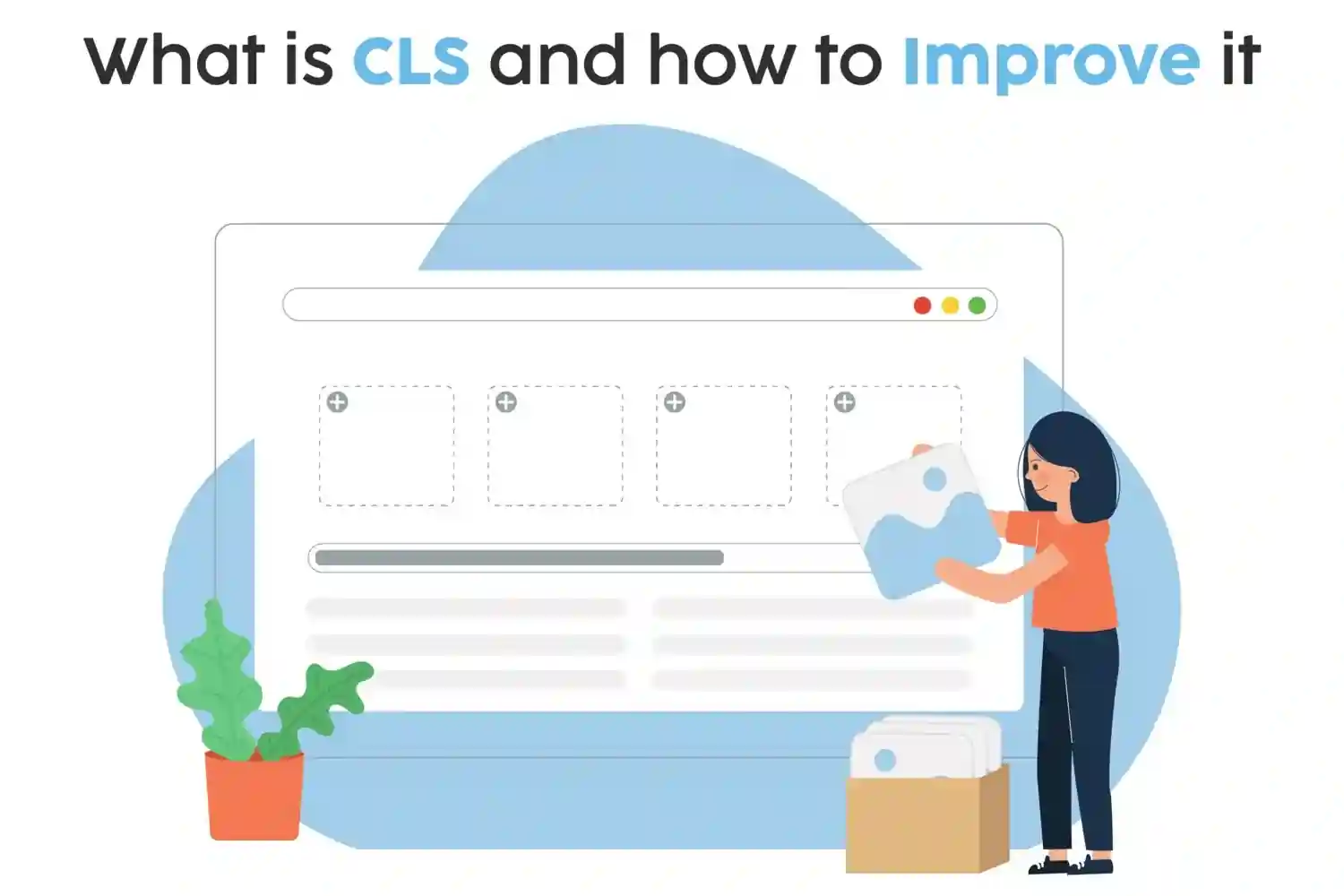
Cumulative Layout Shift (CLS) is a Core Web Vital metric that measures unexpected layout shifts on a webpage. It impacts user experience and Google rankings. Optimizing CLS ensures a stable, user-friendly interface, improves website performance, and enhances search engine visibility, contributing to better engagement, satisfaction, and retention rates.
Highlights
With Over 14 years of Experience in the IT Field, Helping Companies Optimise there Products for more Conversions

CLS is another element of Google’s Core Web Vitals and evaluates web page stability based on a probability percentage. Suppose you are reading an article or about to click on a button on a webpage, and the content decides to move – this causes you to either lose your location or click on something you did not desire. It is this unexpected movement that CLS measures, so obviously both are high to some degree. Such movements can frustrate users and lead to a negative experience, which may drive them away from the site.
CLS is important because it indicates the stability of a page during the loading process and when in use. A low CLS suggested there is no shifting or jumping while using the page, which enhances the page loading and usage experience. On the other hand, a high score delays the page layout from returning to its initial position and is, therefore, annoying. Maintaining a low CLS score contributes to overall user satisfaction and helps retain visitors for longer periods.
CLS is a measure of how much content changes and in which direction, with the size of the change being the determining factor for the amount of CLS. The formula is:
CLS = Impact Fraction × Distance Fraction
Impact Fraction: This metric assesses the extent to which the viewport is impacted by content movement. It evaluates how much of the viewport is affected by the shift, providing a measure of the visual impact on the user experience.
Distance Fraction: This measures the degree of differentiation of the elements. It quantifies how far the elements have moved from their original position, contributing to the overall calculation of CLS.
From the calculations made above, we get a score represented in decimal form. The scale ranges from 0 to the best score and shows the level of shifting from one state to another, where the higher score suggests more heightened uncertainty. Regularly calculating your CLS helps identify specific problem areas on your website.
Google sees CLS as relevant because it influences the usability of the site to a great extent, and therefore should be kept to a minimum. Lack of functionality provoked by such movement of elements may cause users; irritation, mistakes, and, as a result, negative attitudes to the site. For example, if a user is about to click a button and it shifts, they might accidentally click on an ad or another link, leading to a poor customer experience. By maintaining a low CLS score, businesses can ensure that users do not encounter such frustrating experiences, leading to better engagement and conversion rates.
Google has implemented CLS as one of the ranking factors. A low CLS score implies a tighter and more efficient structure of the page, capable of generating better search rankings. Websites that maintain a stable layout are likely to rank higher because they offer a smoother and more reliable user experience. Ensuring a low CLS score can contribute to better search engine visibility and improved user satisfaction.
Several factors can contribute to a high CLS score, impacting the overall stability of a webpage. Understanding these causes is crucial for effectively managing and reducing CLS. Here are some of the key elements that can lead to a higher CLS score:
Images without Dimensions: When images do not have specific width and height tags, the browser does not know what size it should reserve for the images. This uncertainty leads to the shifting of layouts when the images are being loaded. Ensuring that all images have specified dimensions can prevent layout shifts and improve CLS scores.
Ads, Embeds, and Iframes without Dimensions: Similar to images, ads, embedded content, and iframes may shift if their size is not set. This can cause significant disruptions in the layout, especially if these elements are dynamically loaded or vary in size.
Dynamically Injected Content: Applying content changes on a page after the page load process, such as a banner or an ad, can shift other content down or even sideways. Dynamically injected content can alter the layout unexpectedly, affecting the user experience and contributing to a higher CLS score.
Web Fonts Causing Flash of Unstyled Text (FOUT) or Flash of Invisible Text (FOIT): This often happens when a custom font is being loaded, and the text moves from a fallback font before transitioning to the right font. This flash of unstyled or invisible text can disrupt the visual stability of the page, impacting CLS negatively.
Layout Changes Due to CSS or JavaScript: Changes in CSS styles or JavaScript interactions can also cause layout shifts. For instance, animations, transitions, or scripts that modify the layout dynamically can lead to unexpected movements of page elements. These changes might include resizing elements, shifting content, or altering the visibility of components. To minimize such shifts, it's important to manage and test CSS and JavaScript modifications carefully, ensuring they do not disrupt the overall page layout.
Server-Side Rendering Delays: Server-side rendering (SSR) delays can also contribute to CLS. When content is dynamically generated or fetched from the server, delays in rendering can cause layout shifts as elements are progressively loaded and displayed. Ensuring that SSR processes are optimized and that critical content is prioritized can help reduce the impact of these delays on page stability.
To achieve a low CLS and ensure a stable and visually consistent user experience, it's essential to minimize the occurrence of layout shifts. A high CLS score indicates frequent and disruptive changes to the page layout, which can frustrate users and negatively impact their overall experience. Implementing the following strategies can help you address and reduce layout shifts effectively:
Always Include Size Attributes for Images and Videos: Ensure that all images and videos have a set width and height. This makes it possible for the browser to assign the right amount of space before the real content loads completely, thus avoiding shifting. By specifying size attributes, you create a more predictable layout and reduce the risk of content shifting during loading.
Reserve Space for Ads and Embeds: If your site is used to display advertisements or contains embedded content, you’ ll need to allocate space before the advertisements appear. This can be done by specifying fixed dimensions or through aspect ratio boxes. Do not locate the ad spaces where they are likely to lead to shifts. Allocating space in advance helps maintain layout integrity and prevents unexpected shifts.
Avoid Injecting Content Above Existing Content: Select a layout that does not cause newly posted content to automatically scroll down over the existing content. It is preferred to avoid putting new content in areas that will force the layout to shift, such as below the fold. By carefully planning the placement of new content, you can minimize layout disruptions and maintain a stable user experience.
Use Web Fonts that Load Safely: To prevent FOUT or FOIT, take the font-display CSS property with the value set to swap. This way, if the text is deferred and drawn in the custom font, the fallback font will already be shown at the same moment, mitigating the chance of layout shifts. Using this approach helps maintain visual consistency and reduces the impact of font-related shifts.
Monitor and Test Regularly: Some of the tools that you can use to track the CLS score include Google PageSpeed Insights, Lighthouse, or Chrome DevTools. It is essential to perform a daily, weekly, and monthly checkup of your website to have a better understanding of the problem areas that may arise in the future. Regular monitoring allows you to identify and address issues proactively, ensuring that your CLS score remains optimal. Continuous testing helps in keeping your website performance in check and addressing potential problems before they affect users.
Incorporating CLS into your website optimization strategy is crucial for providing a seamless and engaging user experience. By addressing the factors that contribute to layout shifts, you can enhance the stability and usability of your site. Improving CLS not only benefits user experience but also supports better search engine rankings, leading to increased visibility and traffic. A well-optimized site with a low CLS score demonstrates a commitment to quality and user satisfaction, which can positively impact your brand reputation and online success.
CLS is another important measure by which you can guarantee the smooth and stable operation of your site. By understanding what makes layout shifts occur and how to avoid them, you will be able to manage your CLS score better, increase user satisfaction, and achieve better rankings on Google. Maintaining a low CLS score is crucial for providing a positive user experience and ensuring that your website performs well in search engine rankings. A well-optimized CLS score contributes to a stable and reliable site, enhancing overall user satisfaction and engagement.
CLS, together with other Core Web Vitals, is an integral aspect of the modern approach to website optimization. By focusing on these metrics, you can enhance the overall experience for your visitors, ensuring that your site remains competitive and user-friendly in today’s digital landscape. Embracing best practices for managing CLS and regularly monitoring performance will help you create a high-quality web experience that meets user expectations and search engine standards.
At Digittrix, we understand the importance of a seamless user experience and how it affects your website’s performance in search engines. Our team of experts specializes in optimizing websites to meet Google’s Core Web Vitals, including improving your CLS score. We conduct a thorough analysis of your site to identify and address any factors contributing to poor layout shifts. Whether it's optimizing images, managing dynamic content, or ensuring your site is fully responsive, we’ve got you covered.
If you too want to Improve your website CLS score and are unsure of how to begin the process, schedule your appointment or book your consultation today with our expert technical managers by calling +91 8727000867
or write to us for all your queries at digittrix@gmail.com


Do you need help in Digital Marketing ?




Join over 1500+ businesses we've already helped!
Cumulative Layout Shift (CLS) is a metric that measures the visual stability of a webpage. It tracks how often and how much the layout of a page shifts unexpectedly while it is loading or being interacted with by users.
CLS is a key factor in Google’s Core Web Vitals, which are used to assess user experience on a website. A low CLS score indicates a stable and user-friendly page, which can positively influence your Google search rankings.
A high CLS score is often caused by images or ads that load without defined dimensions, dynamic content that shifts existing content, or web fonts that cause layout changes when they load.
You can check your website’s CLS score using tools like Google PageSpeed Insights, Lighthouse, or Chrome DevTools. These tools will show your CLS score and provide insights into what might be causing shifts.

©2025Digittrix Infotech Private Limited , All rights reserved.